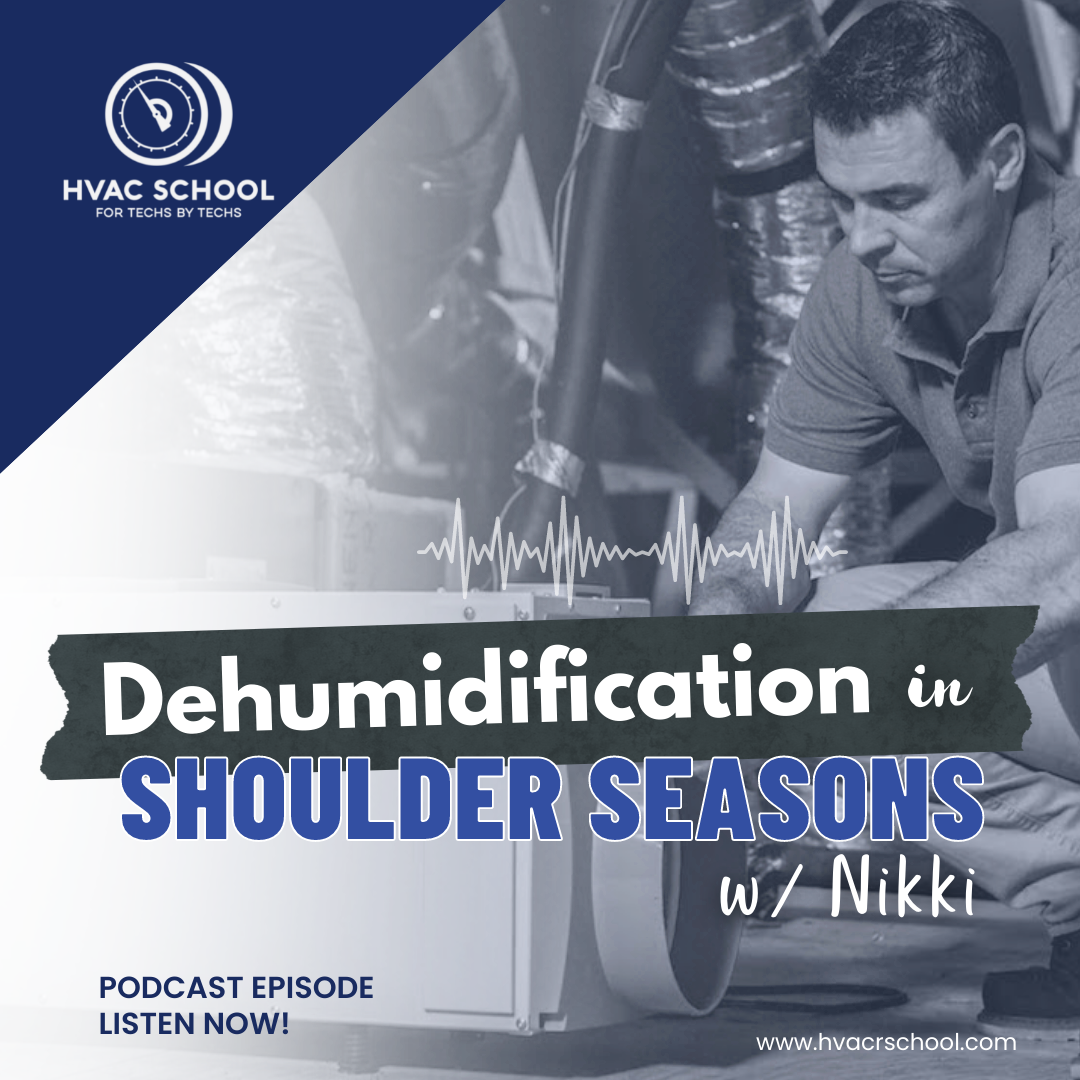Dehumidification in Shoulder Seasons w/ Nikki

Nikki Krueger from Santa Fe Dehumidifiers returns to the podcast to talk about dehumidification equipment and strategies in the shoulder seasons (spring and fall). The shoulder seasons (and the weeks leading up to them) are when many homeowners begin to notice moisture problems in their homes.
HVAC units and dehumidifiers should have a king-queen relationship. The HVAC unit is the king and controls the bulk of temperature and humidity during the day, but the dehumidifier can take care of the humidity when the king needs help. To remove moisture optimally, an HVAC unit needs longer runtimes and a cold evaporator coil. However, there will still likely be gaps in performance, and that’s when the dehumidifier can step in.
Proper equipment sizing can help us achieve better runtimes; we want to avoid oversizing the HVAC equipment, but oversizing is a bit less critical when it comes to installing dehumidifiers. The actual install configuration is more important when it comes to dehumidifiers (i.e., whether it takes supply or return air and ties into the supply or return).
Dehumidification can be coupled with ventilation and filtration; ventilating dehumidifiers bring in outdoor air and should filter it before dehumidifying. The air mixing tends to occur in the dehumidifier, and the mixed, dehumidified air then moves into the supply airstream.
Nikki and Bryan also discuss:
- Condensating vents, walls, and equipment
- Modern homes, energy efficiency, and HVAC
- Infiltration and the building envelope’s effect on humidity
- Effects of equipment sizing and wall/duct insulation
- Fan speed, air mixing, condensation, and humidity
- Andy Ask and Ken Gehring’s contributions and legacies
- Humidity from household habits and behaviors
- Santa Fe Oasis 105 features and operation
If you have an iPhone, subscribe to the podcast HERE, and if you have an Android phone, subscribe HERE.
Check out our handy calculators HERE.








Comments
To leave a comment, you need to log in.
Log In